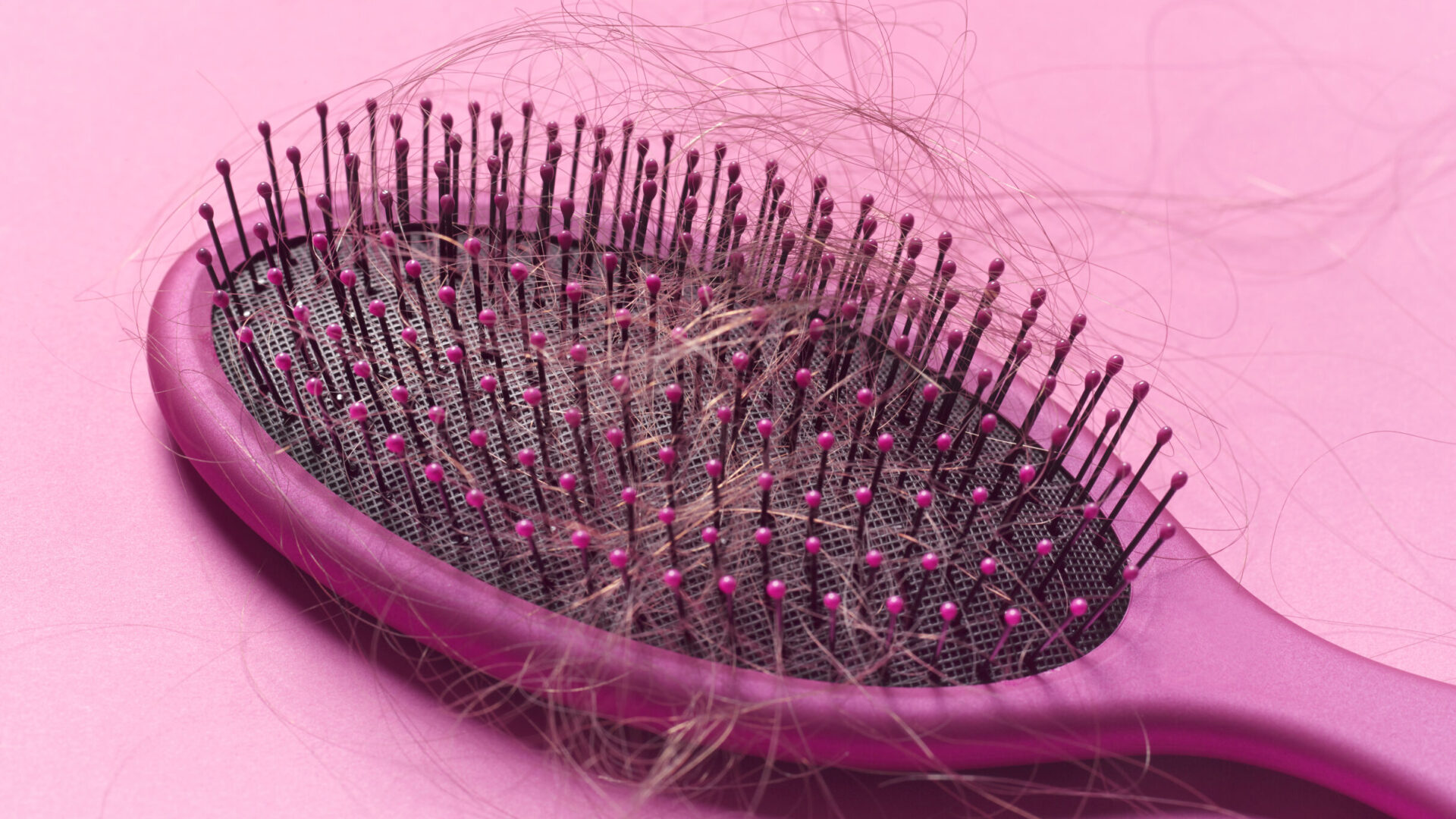
Actress Jada Pinkett Smith, singer Jesy Nelson, and U.S. Representative Ayanna Pressley are among the well-known figures who have opened up about having alopecia in recent years. Most recently, Smith had her shaved head spoken about onstage during the 94th Academy Awards, which led to a controversial conversation with alopecia at its core.
The condition, which can be related to a variety of ailments or life occurrences, like lupus or stress, affects up to 40% of women by age 50, according to Board Certified Physician and Hair Restoration Expert at Eternal Hair & Esthetics, Dr. Ednan Sheikh.
“Female pattern hair loss is a condition that occurs in women who suffer from androgenic alopecia,” Dr. Sheikh said. “It begins with patients noticing a thinning of their hair, along with obvious signs of shedding, such as more hair falling out in the shower, in their hairbrush, and/or on their pillow when they wake up in the morning.”
There are 9 types of alopecia. They are: Alopecia Areata (autoimmune condition where the immune system mistakenly attacks follicles), Anagen Effluvium (loss of hair in the growing phase, common during chemotherapy), Hypotrichosis (no hair growth from birth), Androgenetic Alopecia (hereditary hair loss), Scalp Folliculitis (bacterial infection of the follicle), Telogen Effluvium (when hair follicles are pushed into the resting phase too early), Traction Alopecia (caused by continued tension or pulling), Trichorrhexis Nodosa (brought on by weak points along the hair shaft), and Trichotillomania (caused by compulsive hair pulling).
It is important to know which type of alopecia you are dealing with so you’ll know if treatment is an option and which method will work best.
We asked Dr. Sheik a few questions about alopecia, with a focus on alopecia areata specifically. Keep scrolling to read our conversation.
Is it common for young people to be diagnosed with alopecia?
Women of all ages can experience hair loss, however hair loss usually begins between 12 and 40 years of age in females yet is often too inadequate to be noticed while visible hair loss occurs in about one half of all persons by the age of 50 years.
How can alopecia impact mental health?
Studies have shown that lowered self-esteem, altered self-image and decrease in self-confidence to be significant mental health impacts of alopecia that can lead to isolation and depression. There is a great deal of attention paid to hair in overall appearance and women historically have taken pride in the way they style, color and present their hair. It becomes especially devastating for women who experience hair loss because of pressure to meet commercial/societal beauty standards that point to thick, shiny, long locks as the gold standard for how attractive they are.
Can alopecia areata be tied to any other health complications?
The American Academy of Dermatology Association states that 10% to 20% of people who have alopecia areata see changes to their nails, which can include red nails (shown here), pits in the nails, ridges that run the length of the nails, or nails that become so rough they feel like sandpaper. Additionally, people who have alopecia can develop brittle nails that split and experience hair loss in the eyebrow and eyelash areas.
How can people best support those who have alopecia?
Try to help your friends / loved ones experiencing alopecia remember that disengaging, and hiding because of their noticeable hair loss is not a healthy response and that there are ways to stop and treat their hair loss. Help them find a physician who is certified in hair restoration who can help them understand their options and take the first step towards regrowing their hair and maintaining their scalp and hair health.